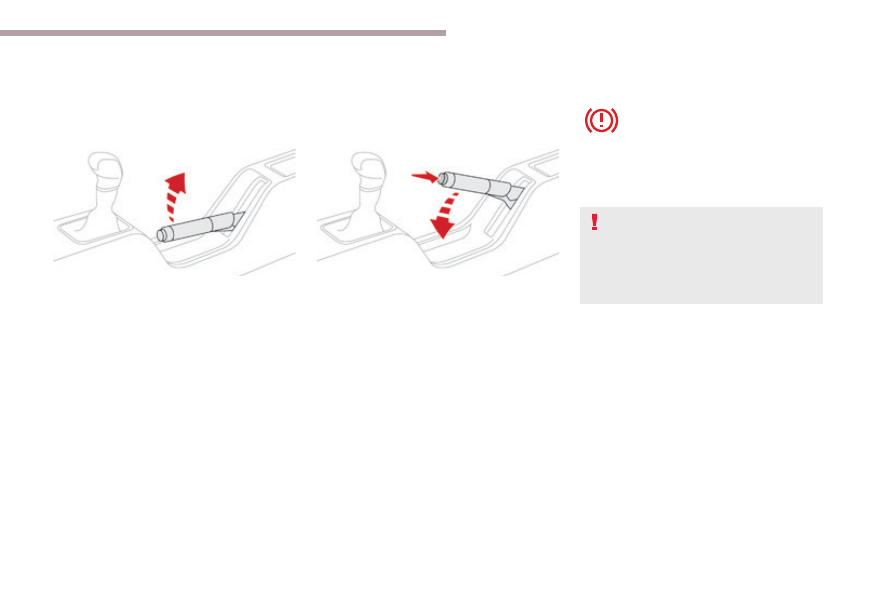Citroen C3 (2017 year). Instruction - part 11

159
6
Driving
B618_en_Chap06_conduite_ed01-2016
Parking brake
Application
Release
When parking on a slope, direct your
wheels against the kerb, apply the
parking brake, engage a gear and
switch off the ignition.
When the vehicle is being driven, if this
warning lamp and the STOP warning lamp
come on, accompanied by an audible
signal and a message in the screen, this
indicates that the parking brake is still on
or has not been fully released.
F
Pull the parking brake lever up to
immobilise your vehicle.
F
Pull the parking brake lever up slightly,
press the release button, then lower the
lever fully.